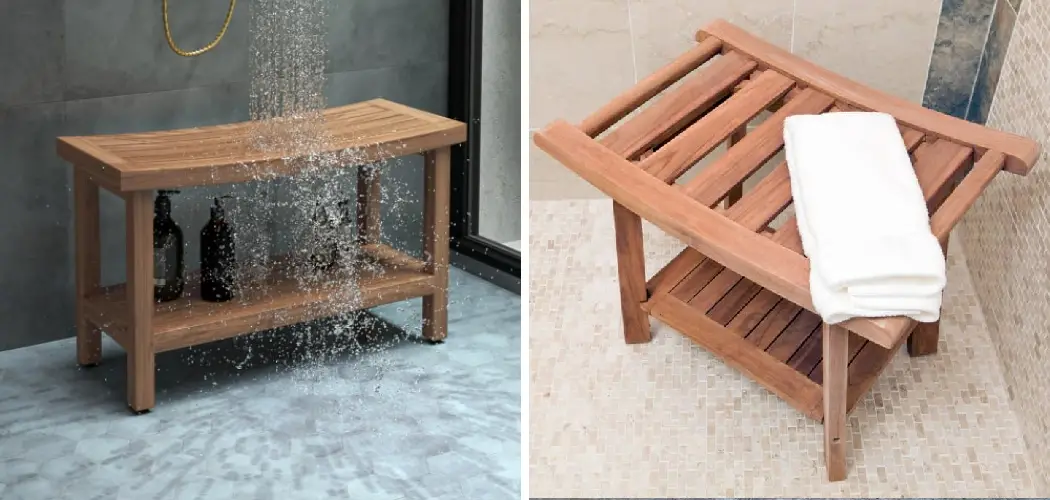If you have a teak wood shower bench, then you know how great they are for providing a comfortable place to sit while you shower. However, it can become stained and dirty if you don’t clean it regularly. And also, you know that it can be tricky to clean.
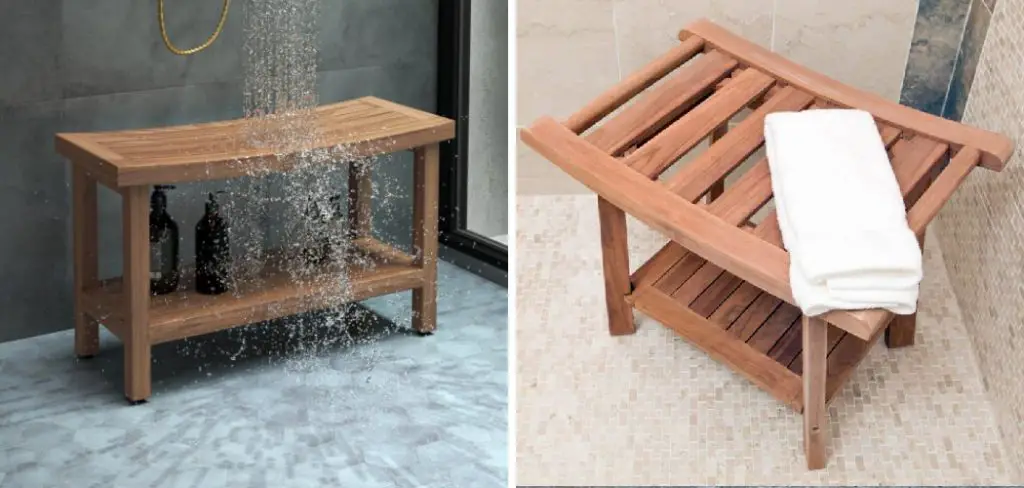
Is your teak wood shower bench looking a little worse for wear? Don’t worry; in this blog post, we will show you how to clean teak wood shower bench quickly and easily. Read on to learn more!
Why is Cleaning Teak Wood Shower Bench Important?
Teak wood is a beautiful, durable wood often used in showers and wet areas. However, constantly exposed to water, it can become stained and discolored over time. Therefore, if you want to keep your teak wood shower bench looking its best, it is essential to clean it on a regular basis. Also, it is very important to clean teak wood shower benches before applying any type of sealer or oil. Otherwise, the sealer or oil will not be able to penetrate the wood and protect it adequately.
Tools You Need to Clean Teak Wood Shower Bench
Teak Oil:
This is a crucial tool for cleaning teak wood shower benches. Teak oil helps to remove any dirt, grime, and stains from the surface of the wood while also nourishing and protecting it.
Soft-Bristled Brush:
A soft-bristled brush will be gentle on the wood while still effectively removing any built-up residue or stains.
Warm Water:
Using warm water will help to soften any dirt or grime on the wood, making it easier to remove.
Mild Soap:
Choose a mild soap that is safe for use on wood. Harsh chemicals can damage or discolor the wood, so it’s best to stick with a gentle soap.
Cloth or Sponge:
You’ll need something to apply the soapy water to the bench and to wipe it clean.
Old Toothbrush:
An old toothbrush can come in handy for cleaning hard-to-reach areas or crevices on your shower bench.
9 Methods on How to Clean Teak Wood Shower Bench
Method 1: Fill a Bucket With Warm Water and Dish Soap
Fill a bucket with warm water and add a squirt of dish soap. Mix and use this solution to scrub down your teak bench. Be sure to rinse the bench off afterward with clean water to remove any soap residue. Remember, it’s important not to let the teak bench soak in water for too long, as this can damage the wood.
You can also use a mild wood cleaner instead of dish soap if desired. It’s best to follow the instructions on the cleaner for the correct dilution ratio.
Method 2: Use a Teak Cleaner
You can use a teak cleaner instead of the dish soap solution if you have a teak cleaner. Simply follow the instructions on the cleaner bottle and apply it to your bench. Be sure to rinse the bench off afterward with clean water to remove any cleaner residue. Otherwise, the residue can attract dirt and grime. It’s important to note that some teak cleaners may contain harsh chemicals, so be sure to read the instructions and use caution when applying.
The advantage of using a teak cleaner is that it can help to restore the natural color of your teak wood shower bench. This method may be necessary if your bench has become heavily stained or discolored.
Method 3: Use White Vinegar
Another household cleaning solution you can use is white vinegar. Simply mix equal parts white vinegar and water in a bucket and use this solution to scrub down your teak shower bench. You can also use a soft bristle brush to help with the scrubbing. But, again, ensure you rinse the teak bench off afterward with clean water to remove any vinegar residue.
You may also add a small amount of baking soda to the mix for added cleaning power. Just be sure to rinse well afterward, as baking soda can leave a residue if not removed completely.
Method 4: Use Baking Soda
Baking soda is another effective cleaning agent for teak wood. Mix baking soda with water to form a paste. Rub the paste onto the teak wood using a soft cloth. Rinse the area with clean water and dry it with a towel. Repeat this process to remove dirt or debris from the surface of the teak wood. This method is gentle enough to use regularly but still effective in removing built-up residue and stains.
But, be careful not to use too much baking soda or apply too much pressure while scrubbing as it can scratch the wood.
Method 5: Use Hydrogen Peroxide
Hydrogen peroxide is another cleaning solution you can use to clean your teak shower bench. Mix one part hydrogen peroxide with one part water. Use a soft cloth to apply the solution to the bench. Rinse the bench off with water. Avoid using straight hydrogen peroxide on teak wood as it may cause discoloration. If you want to use this method, then spot test a small area first.
The advantage of using hydrogen peroxide is that it can help to lighten any dark stains on your teak wood shower bench.
Method 6: Use Rubbing Alcohol
Rubbing alcohol is another effective way to clean teak wood. It will disinfect the surface of your shower bench and remove any mold or mildew that may be present. To use rubbing alcohol, simply apply it to a clean cloth and wipe down the surface of your shower bench.
Let the alcohol dry on the surface for several minutes before rinsing it with clean water.
Method 7: Use Lemon Juice
Lemon juice is another natural cleaning solution that can be used to clean your teak shower bench. The acidic nature of lemon juice will help break down any dirt or soap scum on the bench’s surface. To use this method, simply mix equal parts lemon juice and water in a bucket. Dip a clean cloth into the mixture and use it to wipe down the bench. Next, rinse the bench with clean water and dry it with a soft cloth when you’re finished.
You can also use lemons directly on the bench by cutting them in half and rubbing them onto the wood. This method can be especially effective for removing tough stains or mildew.
Method 8: Use Olive Oil
Olive oil is another natural product that cleans and protects your teak bench. To use olive oil, simply apply a small amount to a clean, soft cloth and rub it onto the bench’s surface in a circular motion. Once you’ve covered the entire bench, allow it to sit for a few minutes before wiping it down with a clean, dry cloth.
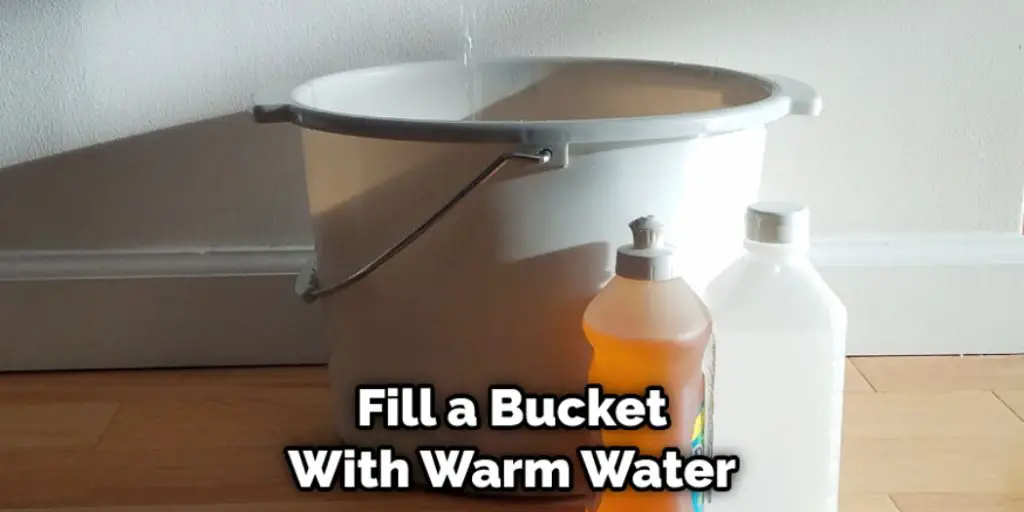
Olive oil will help restore your teak bench’s natural beauty and protect it from future damage.
Method 9: Use Murphy’s Oil Soap
Murphy’s Oil Soap is a cleaner specifically designed for wood. Wet a clean cloth with water and add a few drops of Murphy’s Oil Soap to the fabric. Rub the wet cloth over the teak bench in the direction of the grain to clean it. Rinse away the soap with clean water and dry the bench off with a towel.
Reapply Murphy’s Oil Soap to the teak bench monthly to keep it clean and protected from water damage.
Following these methods on how to clean teak wood shower bench will ensure your teak wood shower bench stays clean and well-maintained. Remember to always use gentle cleaning solutions and avoid using harsh chemicals or abrasive materials that can damage the wood’s surface. With proper care, your teak bench will remain a beautiful addition to your bathroom for years to come.
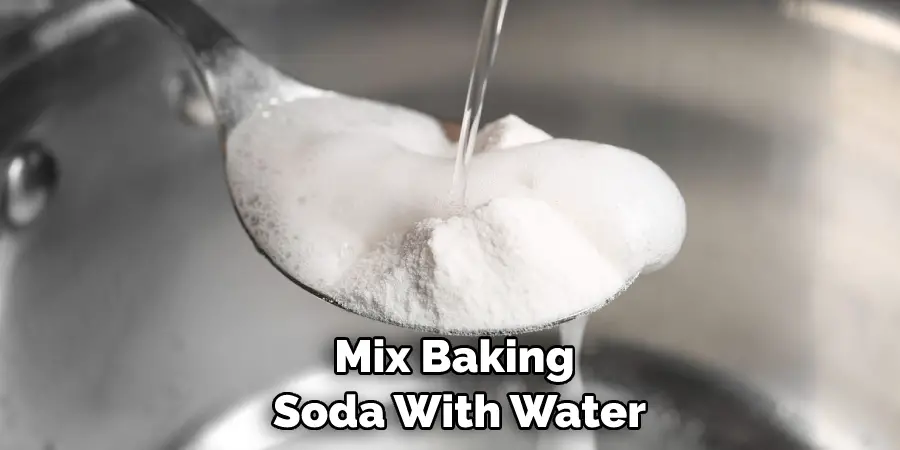
Additional Tips:
- Always rinse off your teak bench after cleaning it with any solution.
- Avoid using harsh chemicals or abrasives on your teak wood shower bench, as they can damage the wood’s natural oils and finish.
- To prevent water stains, regularly wipe down your teak bench with a dry cloth after each use.
- Applying a sealer or oil to your teak bench can help protect it from water damage and maintain its natural color. However, be sure to clean the bench thoroughly before applying any product for optimal results.
- When not in use, make sure your teak shower bench is kept out of direct sunlight and away from extreme temperatures to prevent cracking or warping.
- Regularly cleaning and maintaining your teak wood shower bench will not only keep it looking beautiful but also prolong its lifespan. So, make sure to include it in your regular cleaning routine.
- If you notice any cracks or damage on your teak bench, address them immediately to prevent further deterioration.
- Lastly, when purchasing a new teak wood shower bench, be sure to read and follow the manufacturer’s care instructions for the best results. So, make sure to choose a high-quality teak wood bench that is made specifically for use in showers. This will ensure its durability and longevity.
- With proper cleaning and maintenance, your teak wood shower bench will continue to add functionality and beauty to your bathroom for years to come. So, don’t neglect this important piece of furniture and keep it clean regularly for a luxurious shower experience every time.
Things You Need to Keep in Mind Before Cleaning Teak Wood Shower Bench
1. Read the manufacturer’s instructions carefully before cleaning the teak wood shower bench.
2. Do not use harsh chemicals or abrasive cleaners as they may damage the surface of the teak wood shower bench.
3. Always test the cleaner on a small, inconspicuous area first to ensure it does not damage the finish.
4. Use a soft cloth or sponge to apply the cleaner to the teak wood shower bench.
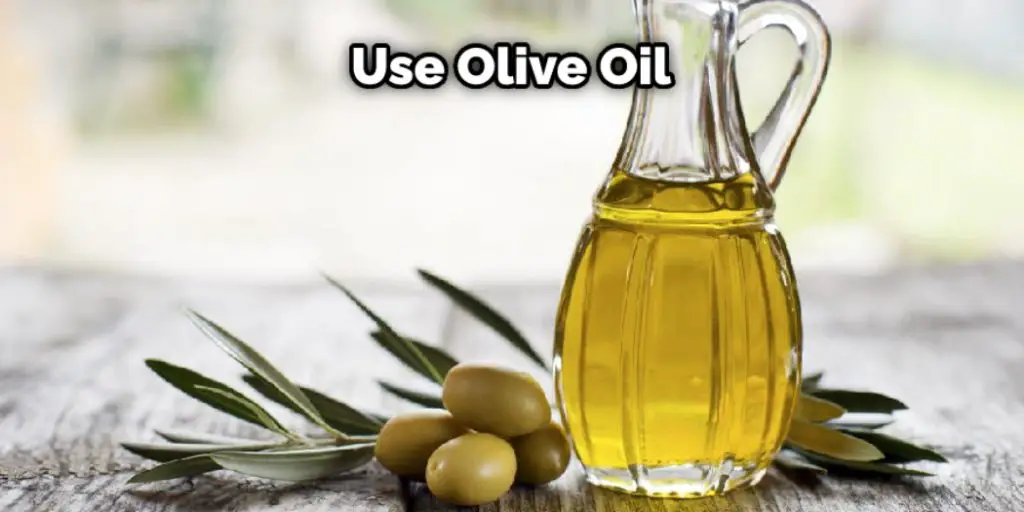
5. Rinse the area thoroughly with clean water after cleaning.
6. Dry the area with a soft cloth to prevent water spots from forming.
7. Apply a teak oil or sealer to the teak wood shower bench if it is unfinished.
8. Do not let the teak wood shower bench become saturated with water, as this can damage the wood.
9. Store the teak wood shower bench in a cool, dry place when not in use.
10. Inspect the teak wood shower bench regularly for damage or wear and tear.
A teak wood shower bench is famous for bathroom furniture because of its durability and water resistance. However, it needs to be cleaned regularly to maintain its original beauty. Keep these things in mind before cleaning the teak wood shower bench; it will help keep it looking great for years to come.
How Long Do Teak Benches Last in a Shower?
Teak benches are one of the most popular choices for showers because of their beauty and durability. Teak benches can last for many years in a shower when adequately cared for. Sometimes, however, they may need to be replaced due to wear and tear.
How often you clean your teak bench depends on how much use it gets. For example, if you have a shower with multiple people using it daily, you may need to clean it more frequently than if you are the only one using the battery. However, the process is relatively simple regardless of how often you need to clean it.
Why Does My Teak Shower Bench Smell?
If your teak shower bench has an unpleasant smell, it is likely due to mold or mildew accumulation. This can happen if the bench is not adequately cleaned and dried after each use. To remove the odor, mix 1/2 cup of bleach with 1 gallon of water and scrub the bench with a stiff brush. Next, rinse the bench thoroughly with clean water and allow it to air dry in a well-ventilated area.
Another way to prevent your teak shower bench from developing an unpleasant smell is to clean and dry it after each use. If the bench does become smelly, you can remove the odor by scrubbing it with a mixture of bleach and water. Then, rinse the bench afterward and allow it to air dry in a well-ventilated area. These simple steps will enable you to keep your teak shower bench looking and smelling great for years to come.
Frequently Asked Questions:
Q: Can I Use a Pressure Washer to Clean My Teak Shower Bench?
A: No, using a pressure washer is not recommended for cleaning teak wood as it can damage the wood’s surface and cause splintering. You should stick to using gentle cleaners and a soft cloth or sponge when cleaning your teak bench. It is also essential to avoid using harsh chemicals or abrasives as they can harm the wood’s natural oils and finish.
Q: Can I Leave My Teak Bench Outside?
A: Yes, teak wood is known for its durability and ability to withstand outdoor elements. However, it is essential to clean and maintain your teak bench regularly if it is exposed to the outdoors. Applying a sealer or oil can also help protect the wood from water damage. Additionally, be sure to store your teak bench in a dry, covered area during extreme weather conditions to prevent cracking or warping.
Q: How Do I Get Rid of Water Stains on My Teak Bench?
A: To remove water stains from your teak bench, mix equal parts water and white vinegar and use a soft cloth or sponge to gently scrub the affected area. Alternatively, you can use a teak cleaner or sandpaper to remove stubborn water stains. Make sure to rinse the bench thoroughly and dry it completely after cleaning. It is also essential to avoid letting your teak bench become saturated with water in the future to prevent further stains from forming.
Q: Can I Use Teak Oil on My Shower Bench?
A: Yes, you can use teak oil on your shower bench to help maintain its natural color and protect it from water damage. However, be sure to follow the manufacturer’s instructions and apply the oil sparingly, as too much can cause a sticky residue. You should also avoid using teak oil on unfinished or untreated teak wood as it may not absorb properly. It is always best to consult the manufacturer’s instructions before applying any products to your teak bench.
Q: How Often Should I Replace My Teak Shower Bench?
A: The lifespan of a teak shower bench depends on various factors such as usage, maintenance, and exposure to water. With proper care, it can last for many years. However, if you notice significant wear and tear or damage to your bench, it may be time to replace it. It is also essential to inspect your bench regularly for any signs of damage or weakness and address them promptly to extend its lifespan.
Overall, with proper care and maintenance, a teak shower bench can last for many years in your bathroom. So follow these simple tips and enjoy the beauty and functionality of this timeless piece of furniture. Happy cleaning!
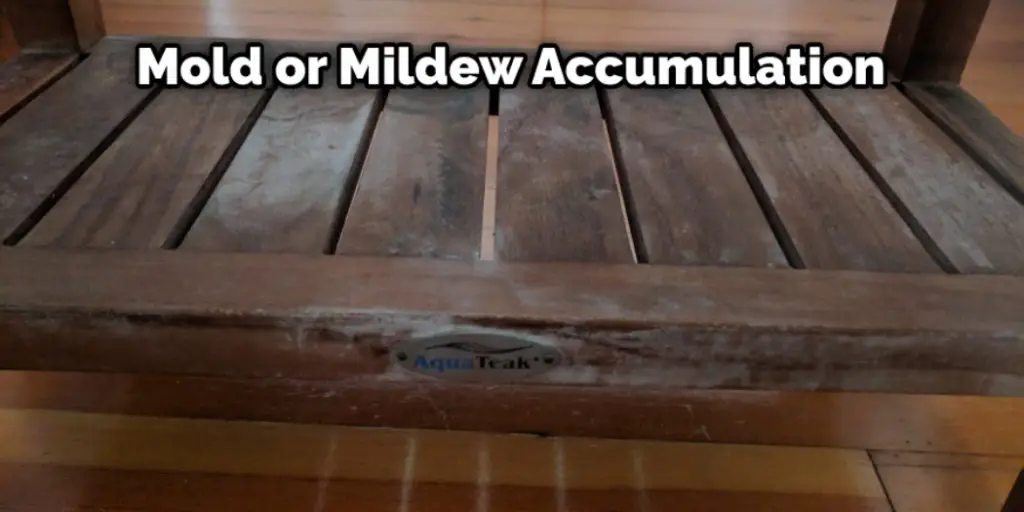
Conclusion
As you can see, cleaning your teak wood shower bench is not a complicated process. However, it requires some time and primary supplies you may already have at home.
Everything you need to clean your teak wood shower bench and keep it looking great for years to come. Follow these methods on how to clean teak wood shower bench; your bench will be sparkling in no time. Have you tried cleaning your teak wood shower bench with these methods? Let us know how it went in the comments below!
You Can Check It Out To How to Clean Porcelain Tile That Looks Like Wood

